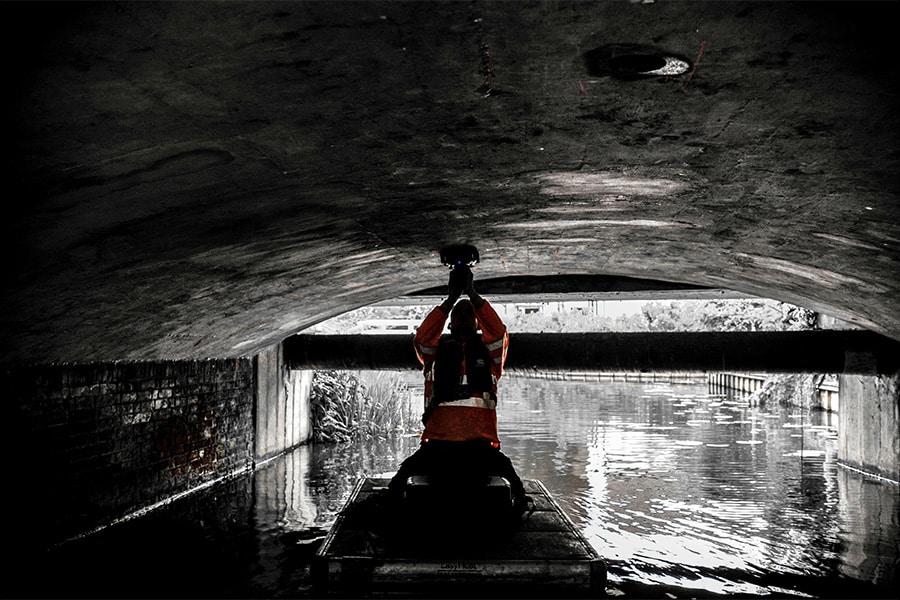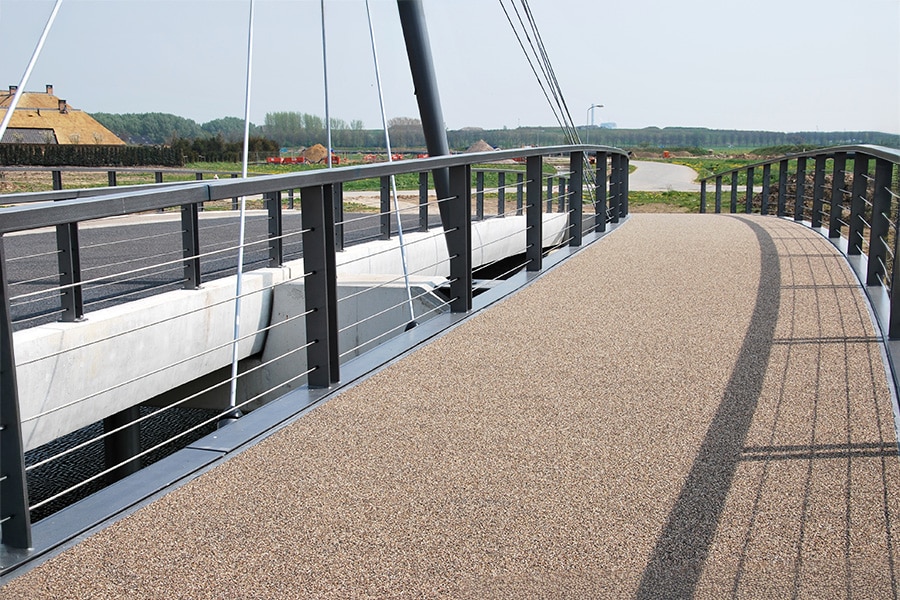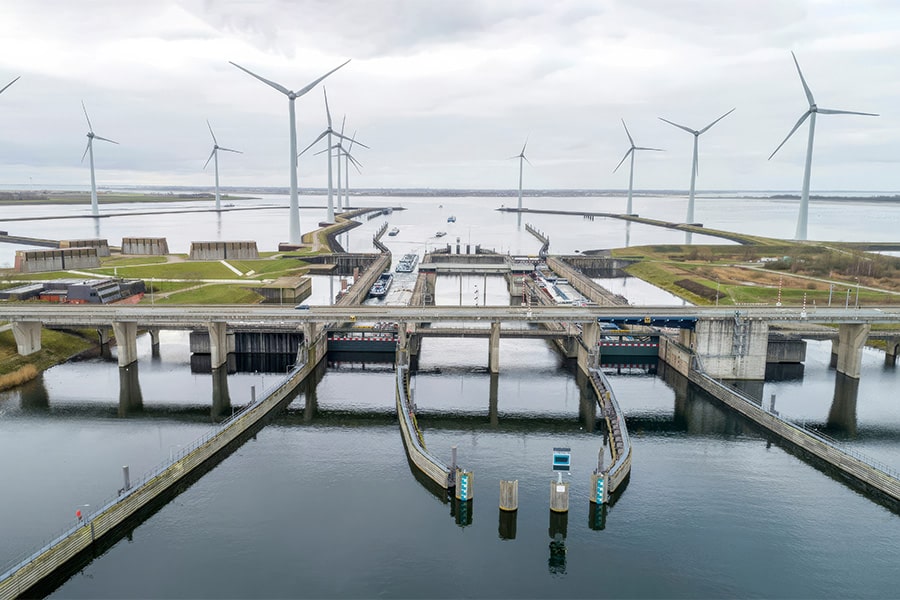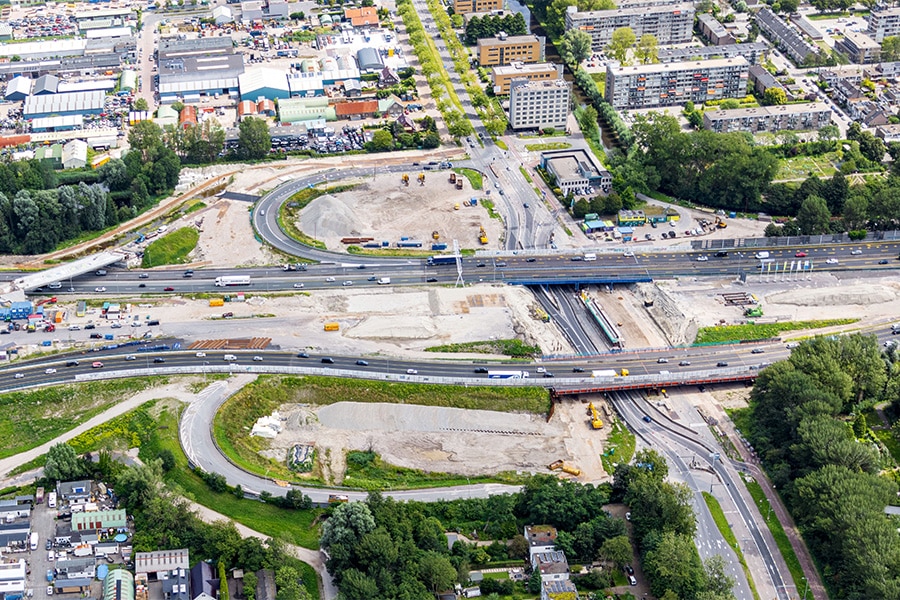
Innovative seal design offers high degree of flexibility
A section of the new N206 ir. G. Tjalmaweg is being further deepened and in the new situation will be below groundwater level. Thanks to an innovative foil construction by Cofra, traffic along the 2 kilometer long route will soon keep its 'feet' dry. This is a unique sealing construction, which has never before been used in the Netherlands in this way and on this scale and which gives main contractor Boskalis Nederland a high degree of flexibility.

The original approach was to excavate the construction pit in the wet and then apply a traditional immersion-foil construction, begins Wiegert Dijkkamp, project manager at Cofra. "We were involved in the tender in 2018 and at that stage, together with Boskalis Netherlands, we came up with an alternative that offers more flexibility, takes up less space in cross-section and also allows us to guarantee optimum quality." The alternative plan includes two sub-tasks for Cofra: the installation of the PE tubing for the water-glass injection on the one hand and - after excavation in the dry - the rolling out and horizontal and vertical welding of the sealing structure.

Water glass injection
At the base of the sunken location of the N206 ir. G. Tjalmaweg is a sheet pile wall. "Over a length of about 2 kilometers, a sheet pile pit has been made that is divided into thirteen compartments. For each compartment we install the infrastructure for the water-glass injection, so to speak," Dijkkamp explains. "We do that on behalf of BE Inject, which creates the water inhibiting gel layer for Boskalis Netherlands. Using vertical carrier racks, we push the tubing to depth with a lance. The unique thing about our setups is that in addition to the positioning at ground level using GPS and the insertion depth, we also measure the slope at which the tubing is pressed in. In this way, we know how the tubing behaves in the subsurface up to the final depth. In case of too large deviations, we and BE-inject can make timely adjustments to be sure of a quality water inhibiting layer after the gel injection."

Vertical plastic welding
After realizing the water-inhibiting gel layer per compartment, the water above it is extracted. The U-shaped construction pit is then excavated, provided with a clean sand bed and Cofra sets to work installing the sealing construction. This consists of a 2 mm thick HDPE foil wrapped with a 500 g/m² screen cloth.2 felt on the underside and 1,000 g/m2 felt at the top. "The vertical processing of the HDPE film is unique by Dutch standards," says Dijkkamp. "Usually there is a faint slope instead of a tub with vertical walls , as here in Katwijk. The sealing construction for the walls is prefabricated at our location in Amsterdam and is suspended on site in the compartments, rolled out and welded vertically. Then the foil construction is applied to the bottom in the traditional way and welded horizontally. Horizontal and vertical foil are joined together to form a watertight tub. In total, about 100,000m2 foil applied, with a height difference of approximately 5.0 - 8.5 meters."
Flexibility
The great advantage of applying the sealing structure in a dry building pit is that you have a good view of the quality delivered, Dijkkamp summarizes. "We are also much less dependent on weather conditions. That definitely benefits the quality. The chemical resistance value of HDPE compared to other plastic films means that no extra calamity film layer is needed in the construction, which makes a difference." In addition to the Cofra internal quality assurance work, a general process control is carried out by Enviro Quality Control and, in addition, the Geologger leak detection system is installed for optimal control of watertightness during the construction phase, but also, if required, during the use phase. After the checks, a compartment will be backfilled with sand and Boskalis Netherlands can proceed with the construction of the road structure on it. The fact that the sunken location is divided into thirteen compartments also provides the necessary flexibility. "Suppose one of the (sub)contractors suffers some delay, then we simply 'hop on' to the next compartment. When sinking a foil structure, that is virtually impossible. It is an interplay of work, in which we are more than satisfied with the cooperation with our client," says Dijkkamp.
The first compartments of the sunken ir. G. Tjalmaweg are now fully completed for Cofra. "We are already over halfway through and are nicely on schedule," says Dijkkamp. He expects more such projects to follow in the coming years. "You see more and more in the Netherlands that roads are being sunken to make the landscape less disfiguring and to prevent noise pollution. In any case, we are ready for it."



